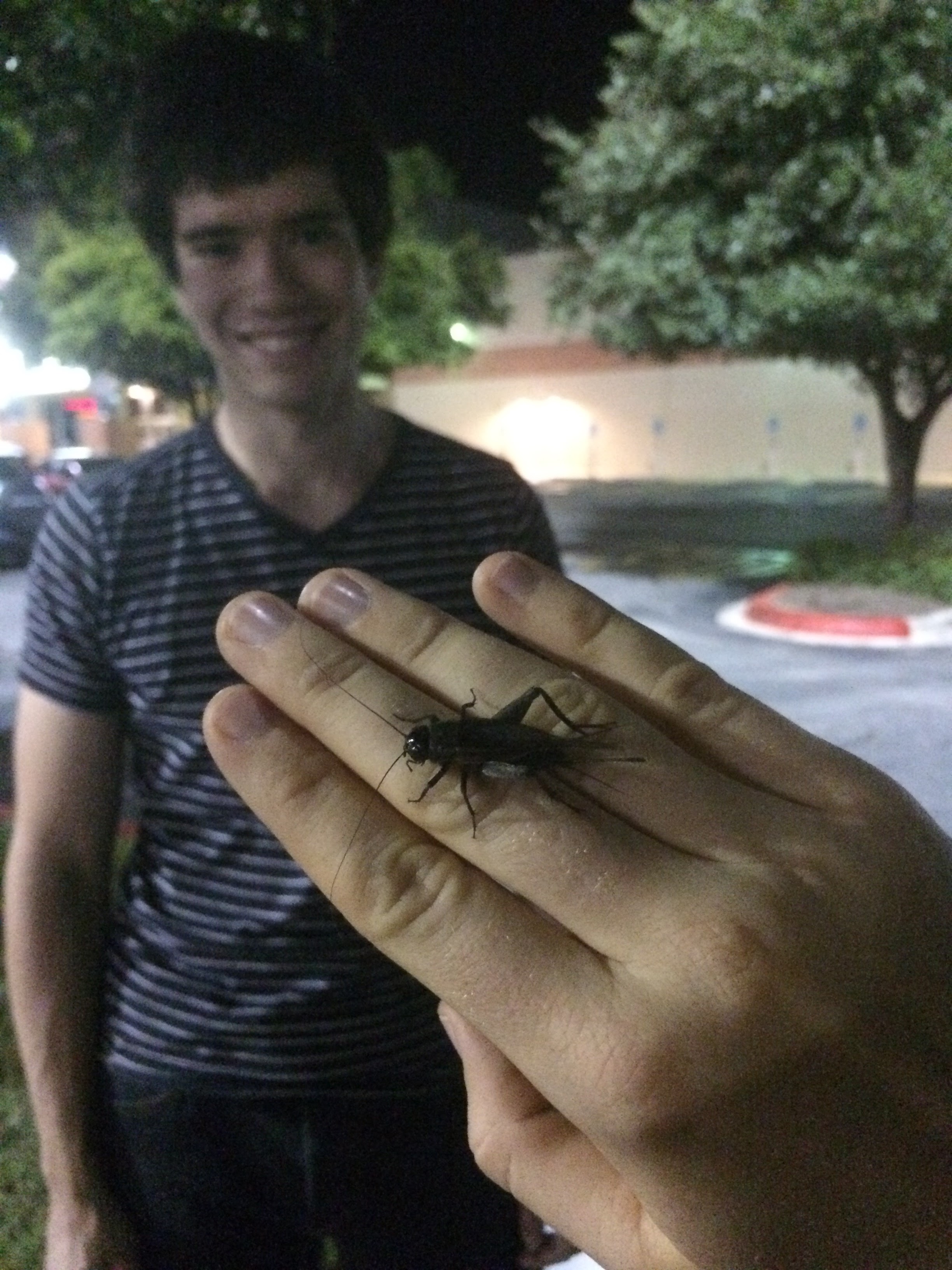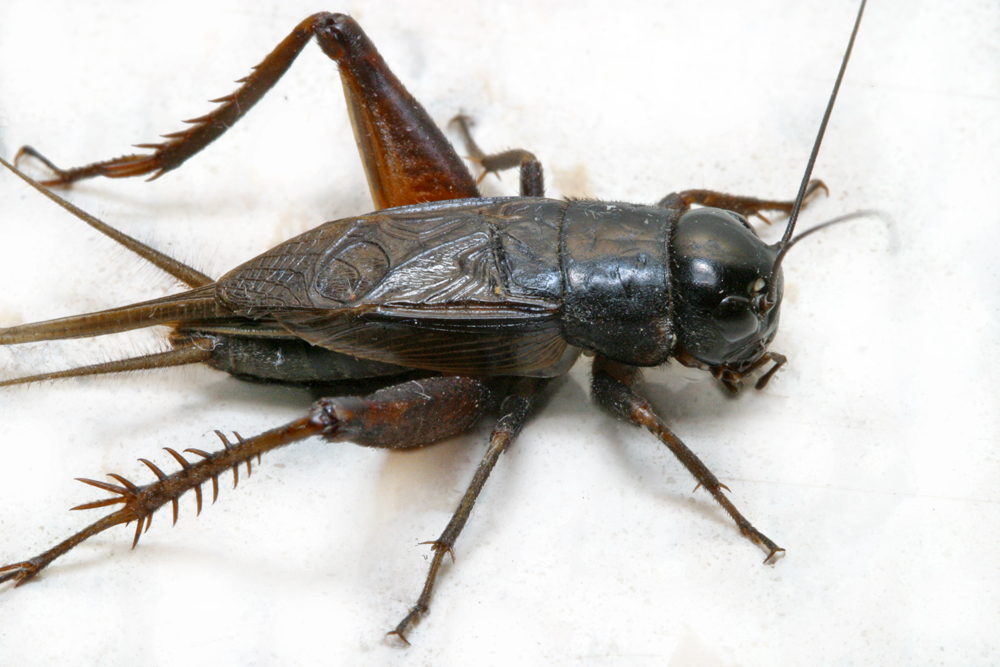One of the great mysteries of my career as a Texas urban entomologist has been understanding the clouds of crickets that descend on lights and businesses nearly every year. So I was intrigued last summer when I got an email from a PhD student at Cornell University interested in coming down to study our swarming crickets.
Jay Falk is actually a native Texan, who grew up in the Austin area and got his undergraduate degree at the University of Texas. That’s where he got his first introduction to crickets, watching them swirl around the lighted University of Texas Tower each fall. That experience and an enthusiastic professor at UT led him to decide to study crickets at Cornell.
When asked why we should care about crickets, he responds, “Crickets have all these dramatic behaviors that no one notices. And, they are such an important part of the biology of their ecosystems, being an important link in the food chain.”
Some of the dramatic behaviors, he explains, includes fighting for females and territory, mating flights, bursting into bouts of song, courtship, and just surviving all the things that want to eat cricket for supper.
Jay explains that there are at least three similar cricket species in Texas, but the only one known to swarm in large numbers is the Texas field cricket, Gryllus texensis. In east Texas, a physically identical species exists, Gryllus rubens. The two crickets can be told apart only by their song, and by the fact that rubens doesn’t swarm. Both crickets have two generations per year. The spring generation is relatively small, and not frequently noticed. The second generation is bigger, and responsible for sometimes spectacular swarming flights around lights and buildings.
As an evolutionary biology student, Jay is interested in how juvenile experiences influence mating behavior later in life. The male Texas field cricket is known to have two strategies for attracting mates. The first strategy is to establish a mating territory and use a loud calling song to catch the interest of a passing female. This strategy presumes the ability of the cricket to claim a good territory and defend it from other males. These territorial fights can be spectacular, with males locking jaws and attempting to flip their opponents over. The victors even break out into victory dances and a special victory song.
The second strategy involves sitting just outside a calling male’s territory and attempting to woo a female cricket drawn to his rival’s calls. Jay theorizes that these so-called “sneaker males” adopt this strategy after having previously lost to the insufferable big boys. If his theory proves correct, you might call this strategy the cricket version of “revenge of the nerds”.
When I ask Jay why this one species of cricket has adopted this swarming behavior, he shrugged. “There’s a lot biologists don’t know about the field behavior of even very common insects like the field cricket,” he said. Even food. Apparently there is little evidence what these common insects eat. “I feed my crickets cat food,” he said. But it’s likely that in the field much of a cricket’s diet is decaying plant material, and the occasional smaller insect. They are not considered important crop pests in Texas.
“Texas field crickets are a unique part of the Texas experience,” Jay added at the end of our conversation. And I think he’s right. They are part of what makes Texas a special place, at least for an evolutionary biologist.

